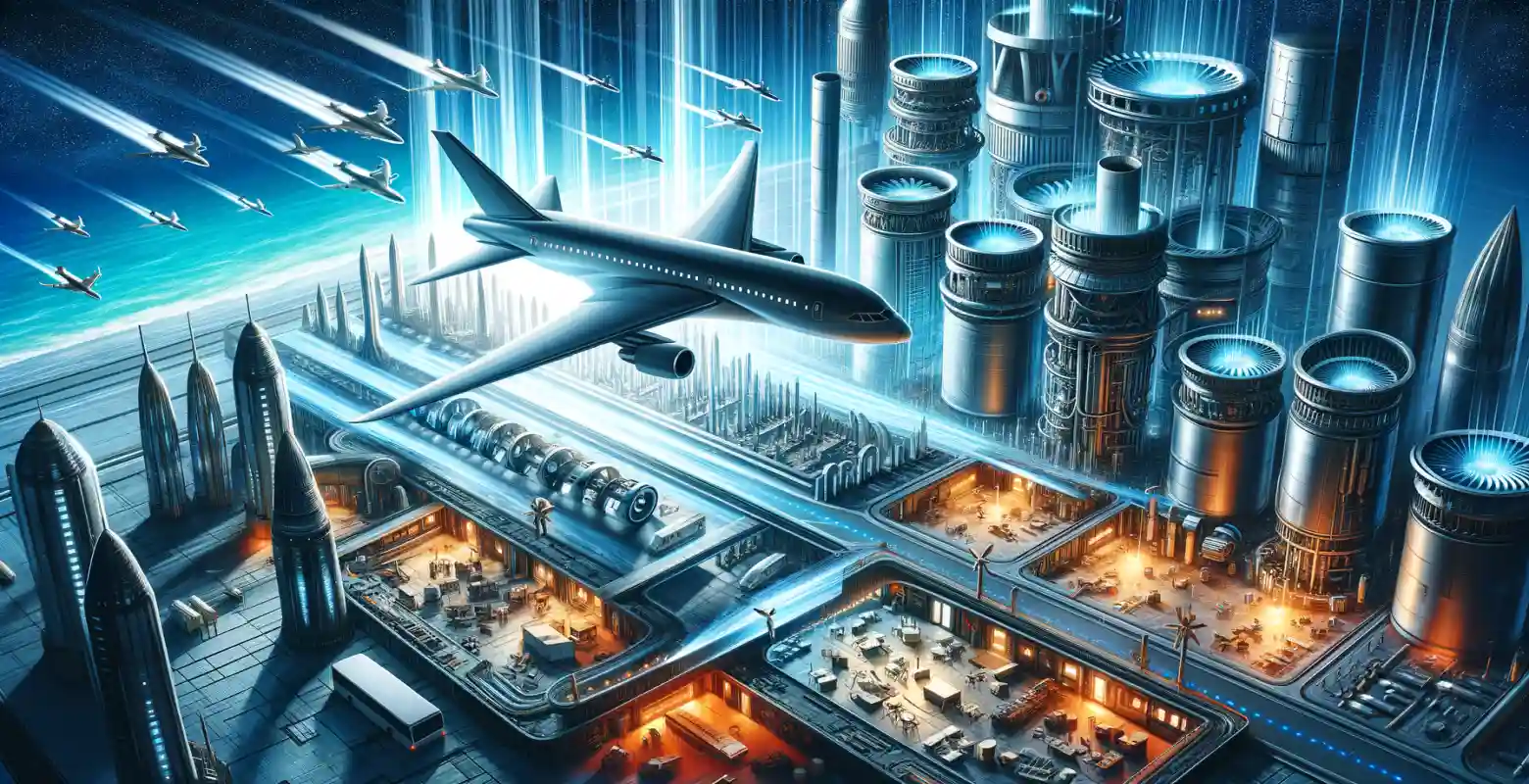Revolutionary building materials for modern airplanes
Introduction
The modern aviation industry faces many challenges related to growing expectations regarding efficiency, safety, and sustainable development. Modern aircraft must be lighter, more durable, and economical to operate, which requires the use of innovative building materials. Revolutionary materials that have revolutionized the aviation industry play a key role in meeting these requirements. In this article, we will look at what materials are currently being used, their advantages, and the challenges they face.
Carbon Composites: Lightweight and Durable
Carbon composites are one of the most important materials used in modern aircraft constructions. They consist of carbon fibers combined with polymers, giving them exceptional strength while maintaining low mass. Compared to traditional metallic materials such as aluminum or steel, carbon composites offer a significantly better strength-to-weight ratio.
The use of composites allows for a significant reduction in the aircraft's mass, resulting in lower fuel consumption and reduced CO2 emissions. Airbus A350 and Boeing 787 Dreamliner are examples of aircraft that utilize composites in their fuselage and wings, achieving excellent flight performance as a result.
Titanium: Ideal Material for Critical Components
Titanium is another material that has revolutionized the aviation industry. Due to its excellent corrosion resistance and high strength, titanium is often used in components that must withstand extreme conditions, such as high temperatures and pressures.
Its applications include jet engine parts, landing gear components, and various structural elements. Although titanium is more expensive than traditional materials, its properties make it indispensable in critical applications where safety and reliability are paramount.
Aluminum: Tradition and Modernity
Aluminum has long been a primary material in aircraft construction, thanks to its lightweight and corrosion resistance. Modern aluminum alloys, such as 7075-T6, offer even better mechanical properties, allowing for its extensive use in fuselage and wing structures.
Despite the increasing use of composites and titanium, aluminum remains an integral element of aircraft constructions. Its benefits include ease of processing and lower cost compared to more advanced materials, making it an economical choice for many manufacturers.
Ceramics: New Possibilities for Jet Engines
Advanced ceramic materials, such as fiber-reinforced ceramics, are beginning to play an increasingly important role in the construction of modern jet engines. Their exceptional resistance to high temperatures makes them an ideal material for components operating in extreme thermal conditions.
Compared to traditional metallic materials, ceramics allow for increased thermal efficiency of engines, resulting in better performance and reduced fuel consumption. The use of ceramics in jet engine turbines is one direction of development that can significantly impact the future of aviation.
Graphene: Material of the Future
Graphene, although not widely used yet, is considered a material of the future in aviation. Its unique properties, such as phenomenal strength, thermal, and electrical conductivity, open up new possibilities in aircraft design and construction.
Research on the application of graphene in aviation focuses on its potential to increase the strength and reduce the mass of components. Although this technology is still in development, many companies are already investing in research on its commercial application.
Challenges and Future Trends
Introducing new building materials in aviation poses many challenges, such as production costs, processing difficulties, and the need to meet rigorous safety standards. However, technological progress and continuous scientific research help overcome these barriers.
The future of aviation will depend on the ability to further develop and implement revolutionary materials. As demands for efficiency and sustainable development grow, new materials will play a crucial role in shaping future generations of aircraft.
Summary
Revolutionary building materials are a key element of modern aircraft, allowing for better flight performance, reduced fuel consumption, and increased safety. Carbon composites, titanium, aluminum, ceramics, and graphene are just some of the materials shaping today's aviation.
Their development and implementation come with numerous challenges but also open up new possibilities that can influence the future of the entire industry. Monitoring progress in this field is crucial for all those interested in the future of aviation, from both a technical and environmental perspective.






Number of comments: 0